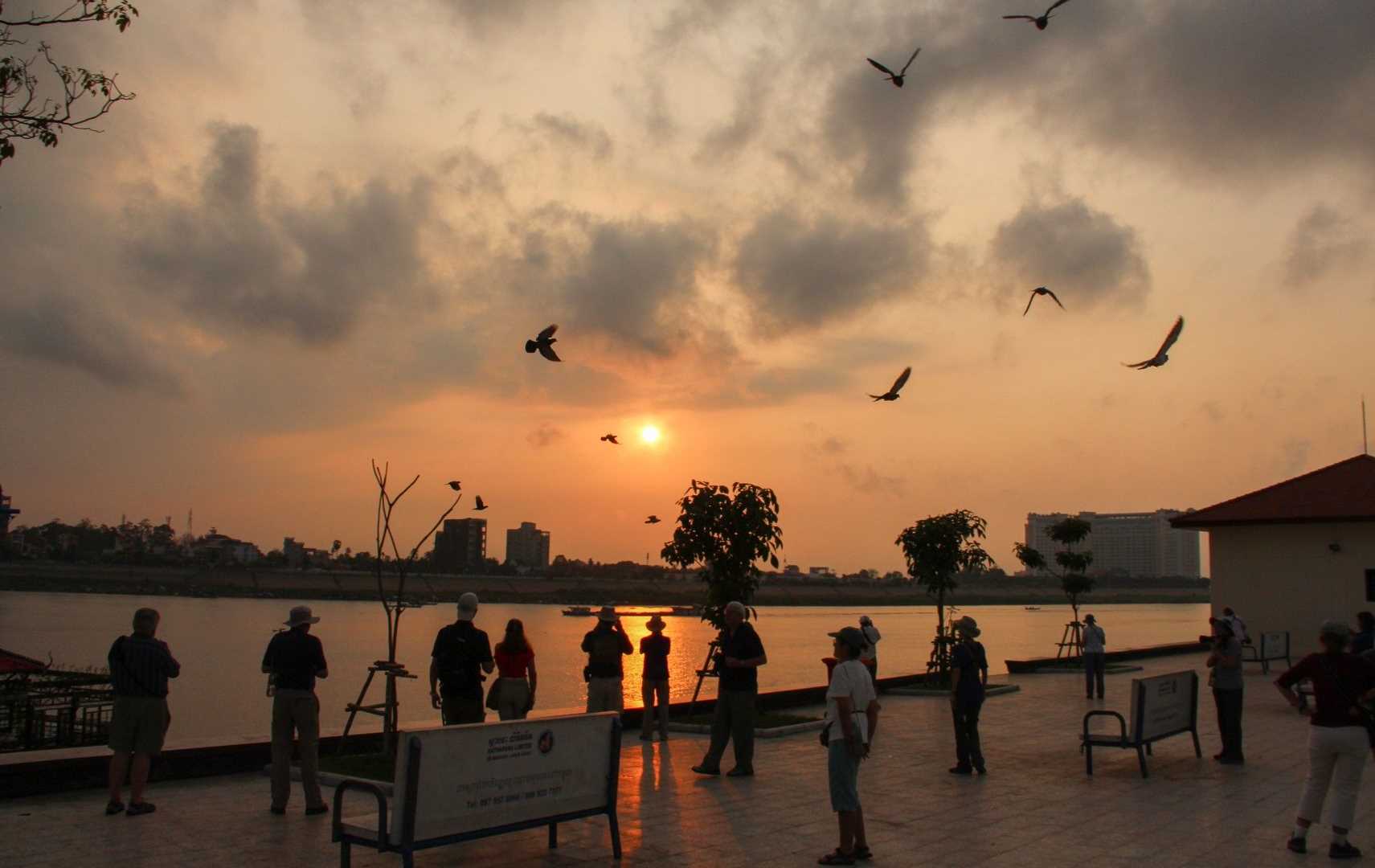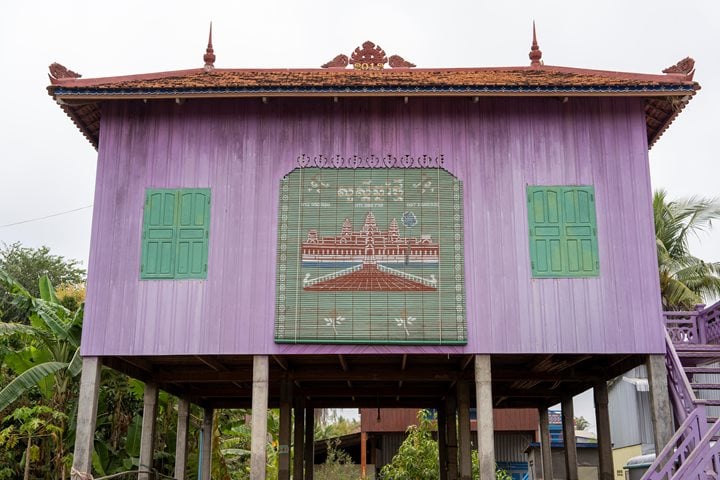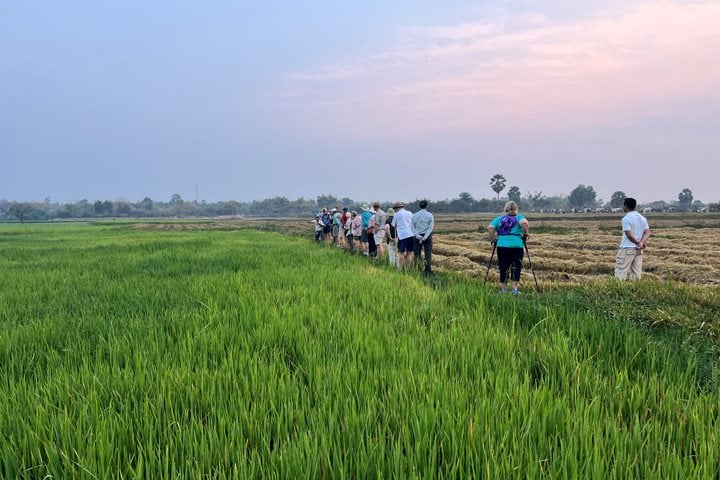We awoke this morning in the Cambodian capital. Jahan is docked at the ferry terminal at the top end of Sisowath Quay, the scenic waterfront promenade of Phnom Penh. The early birds – and birders – went ashore for a walk to see the city streets come to life, as well as a spot of photography in the beautiful morning light of the “golden hour.” On the way we pass the fruit bat colony near Wat Phnom, where hundreds of the flying foxes roost each day before heading out to feed at dusk. Once back onboard Jahan we cast off and begin our transition into Vietnam. Phnom Penh, is located at the confluence of the two main rivers – the Tonle Sap and Mekong flow in, while the Bassac and the Mekong flow out. Also known as Chaktomuk (literally “Four Faces”, in reference to the four arms of the river), the Cambodian capital was well situated at the crossroads of regional riverine trade.
It’s around 70 miles from Phnom Penh to the border so we’ll be on the ship all day. Our next port of call in Vietnam is Chau Doc, a small city located on the Bassac River, but the Cambodian portion of the Bassac is not navigable for a ship the size of Jahan, so we head down the Mekong instead. This morning we have a guest speaker, Jean-Michel Filippi, a linguist by profession who also specialises in 20th century Cambodian history. His lecture takes us through all the events of post-independence Cambodia and helps contextualise the political and ideological background of what would become the Khmer Rouge. However, nothing can really explain the horrors they were to unleash on these people.
After lunch we join Jahan’s general manager Voant on a tour of the ship’s lower decks. Behind the scenes we pass through the engine room and galley, as well as the laundry and water filtration systems, and finally we visit the captain on the bridge. Later in the afternoon our Global Perspectives guest speaker Robert MacNeil gave a talk titled “What we learned from Vietnam.” And for the culinarily curious, the ship’s chefs show us how to make two of Southeast Asia’s signature dishes – Khmer amok curry, and Vietnamese fired spring rolls. Bon appetit!
Once we pass customs and cross the Vietnamese border we notice a sudden change in the landscape. Barges, boats, docks, farmhouses, factories and warehouses are everywhere. The massive population and marked progress in development is immediately apparent in Vietnam. Shortly we turn into the Tan Chau canal, an artificial channel linking the Mekong to the Bassac River which was first excavated in the early 19th century (it has been significantly widened since then, though). As we cruise along the narrow channel we see factories and floating houses, farmers tending their fields, and children playing on the banks or swimming in the water. As the sun sets we drop anchor and prepare for an early start in the morning.







